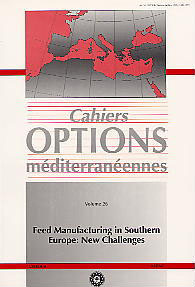| Article précédent | p. 161-174 | Article suivant |
Technical aspects of enzyme utilization: Dry vs liquid enzymes
It is difficult to draw conclusions on the general technical literature on enzymes, as new developments are rapidly taking place. The general assumption, however, is that liquid enzymes are generally less stable than solids although they may have greater activity than their solid counterparts. In general practice it is assumed that the loss in activity of liquid enzymes due to thermal and mechanical treatments can be substantially minimized once incorporated into the feed, as their hydric content is decreased. The feed acts therefore as a stabilising agent. With present manufacturing processes of enzymes, they can easily be sprayed or added on to special carriers, thus making them more resistant to thermal treatments, although this carries an additional cost in their production. It is therefore generally concluded that the choice of a liquid enzyme, either directly in its liquid form or sprayed or absorbed onto a solid carrier, is in many cases a simple commercial decision. It seems clear that, apart from the intrinsic characteristics of the enzyme utilised, the same enzyme, when applied onto a solid carrier, be it either the feed itself or an adequate carrier, increases its resistance to temperature. On the other hand, when the thermal process of the feed exceeds 90 degrees C, liquid enzymes may present some advantages in terms of activity losses.
- [ Afficher ]
- [ Télécharger ]
- [ Exporter la citation ]
Vous pouvez télécharger la citation au format :
- [ Imprimer ]
-
Mots-clés
ALIMENT POUR ANIMAUX, COMPLEMENT ALIMENTAIRE, ENZYMECiter cet article
Mascarell J., Ryan M. Technical aspects of enzyme utilization: Dry vs liquid enzymes. In : Morand-Fehr P. (ed.). Feed manufacturing in Southern Europe: New challenges. Zaragoza : CIHEAM, 1997. p. 161-174. (Cahiers Options Méditerranéennes; n. 26). South European Feed Manufacturers Conference, 1996/05/09-11, Reus (Spain). http://om.ciheam.org/om/pdf/c26/97605982.pdf



